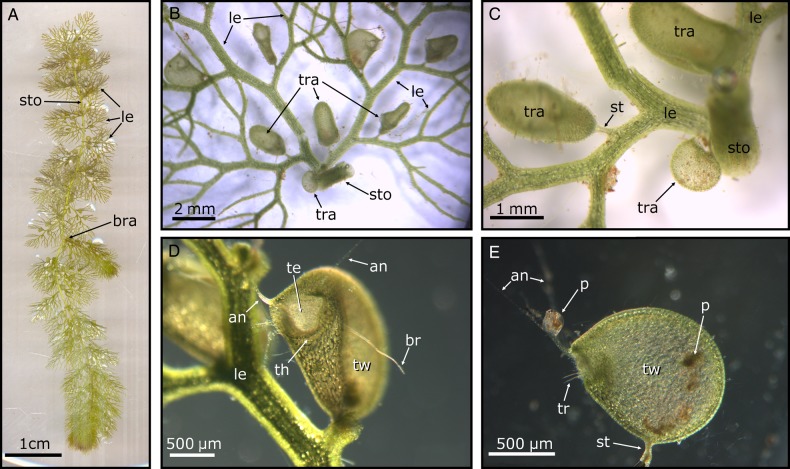Figure 1.
General bladderwort morphology, depicted exemplarily by U. vulgaris. (A) Young plant, resprouting from hibernation. The stolon (sto), leaves (le) and a branching point (bra) are clearly visible. (B) View of a detached leaf foliar shoot node featuring a trap (tra) dimorphism. Note the stolon remnant and a small, morphologically divergent trap. ‘Normal’ traps are dispersed on the pinnate leaves. (C) Detailed view of the leaf base, note the trap stalk (st). (D) Inclined frontal view of a trap. The trap entrance (te) possesses a door, a threshold (th), ‘antennae’ (an) and ‘bristles’ (br). The lateral trap wall (tw) is concave. Hence, the trap has generated underpressure inside and is ready to capture prey. (E) Lateral view of a detached trap, the entrance faces towards the left-hand side. A small prey animal (p), presumably Chydorus spec., grazes algae on the ‘antennae’. Already caught prey is visible inside the trap. The trigger hairs (tr) protrude from the trapdoor.

